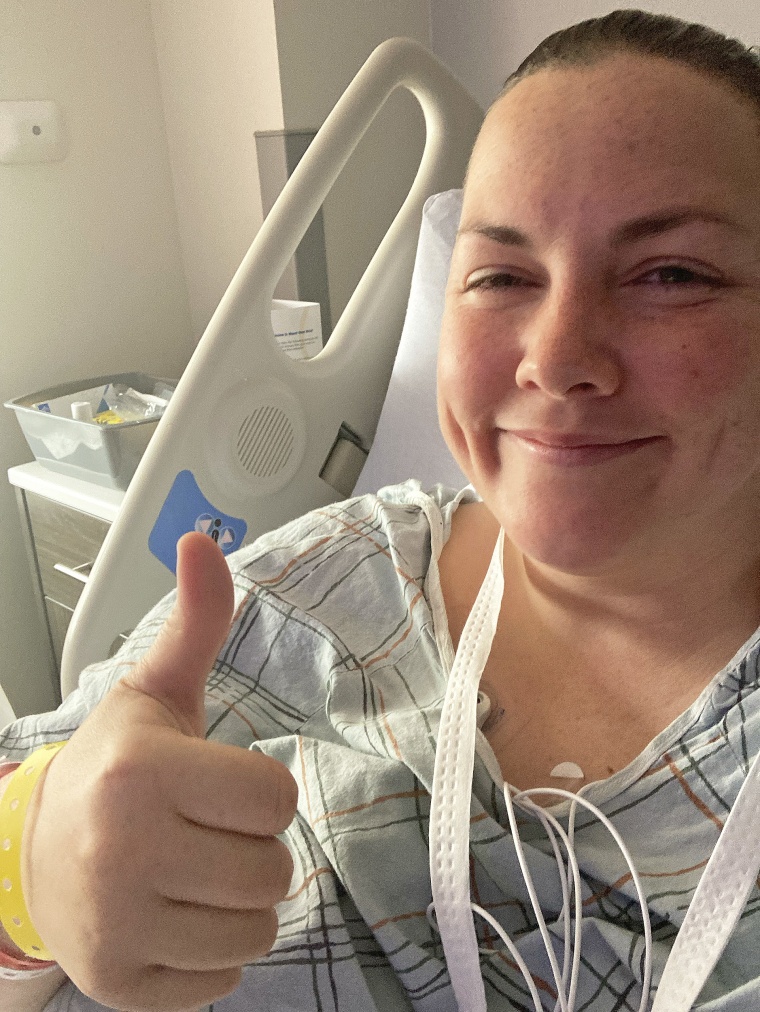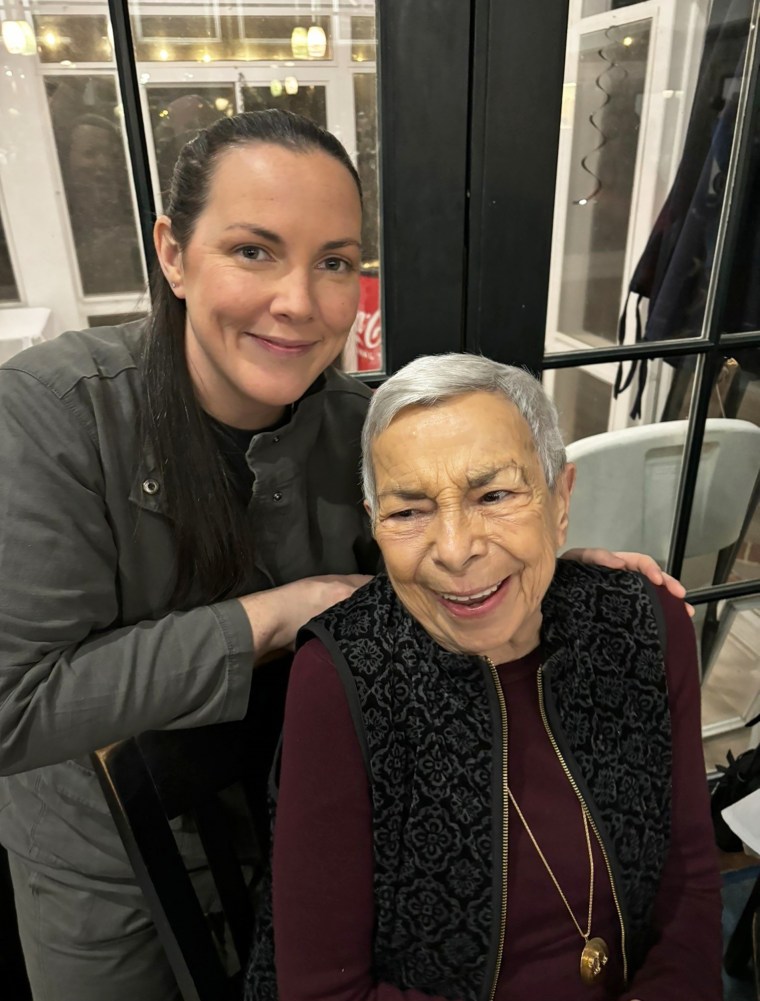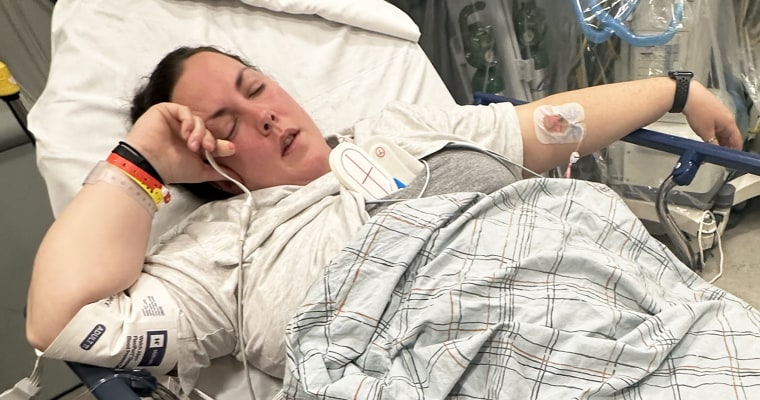After dog-sitting for a friend in May 2023, Jessie Malone, then 35, woke feeling nauseated. She thought little of it and took an electric bike home. As she neared her apartment, an alarm on her Apple Watch began chirping.
“It was saying you need to seek medical attention immediately,” Malone, 36, of New York City, tells TODAY.com. “It was red and vibrating. I was like, ‘Oh my God.’”
She decided to go to the emergency room, where she learned she was experiencing atrial fibrillation (Afib), a rapid and irregular heartbeat that can lead to blood clots and stroke, according to the American Heart Association.
“I was just going to go home and take a nap if my watch hadn’t said anything,” Malone says.
Afib may be more common and more severe in young people than previously thought, according to new research. And like Malone, more young people seem to be receiving their diagnoses thanks to Apple Watches, experts say.
'Has anyone in your family ever dropped dead?'
When Malone awoke in her friend's apartment and felt nauseated, she waited about an hour before heading home. She felt well enough to bike, but on the ride, she noticed her heart rate increased to 160 beats per minute. The American Heart Association says a normal resting heart rate is 60 to 100 beats per minute.
“I didn’t really feel anything other than nausea,” she says. “That gave me a little bit of anxiety. I’m like, ‘That’s so bizarre.’”
She soon became worried when her watch began sending her warnings about a medical emergency.
“It started blaring that my resting heart rate was elevated and also that I had gone into Afib,” Malone recalls.
Even though Malone was unfamiliar with Afib, which usually occurs in older people, she still decided to visit the emergency room at Mount Sinai West.
“I dumped the bike, and I texted my friend who I just left and I was like, ‘This thing is happening. I don’t know if it’s serious,’” she says.
Staff in the emergency department began taking her vital signs as she explained what her watch was saying. Soon after she arrived, staff called a code.

“Suddenly I’m surrounded by eight doctors,” Malone says. “That’s when one of the doctor’s first question was, ‘Has anyone in your family ever dropped dead with no explanation? And I was like, ‘Whoa, what?!’”While Malone tried joking about the situation, she quickly realized how dire her condition was. Doctors informed her that to take back control of her heart, they needed to give her a medication to stop her heart so they could restart it with a defibrillator. But the medication did not work, so they found another medication that lowered her heart rate to 130 beats per minute.
“Afib is a rare thing (to happen) to someone my age, so they were hoping that it would self-correct,” she says. “But that didn’t happen.”
Doctors admitted Malone to the hospital and planned to do a procedure on her the next day if her heart rate remained elevated. She felt stunned.
“I was in shock the whole time. It felt like an out-of-body experience,” she says. “I felt very nervous.”
The next day, Malone’s heart rate remained elevated, so doctors performed a cardioversion, a minimally invasive procedure where they use a scope to examine the heart and then send electrical currents to shock it back into a normal rhythm. The next day she was able to return home and stopped at the local pharmacy to pick up beta blockers and blood thinners, which she says she needed to take for a month.
“It was one of those things where in a normal scenario I would be frustrated with a long line,” Malone says. “But I was like, ‘Wow, I’m alive and I’m at CVS. This is great.’”
What is atrial fibrillation?
Afib is “among the most common abnormal heart rhythms,” says Dr. Asad Mohammad, cardiac electrophysiologist at Mount Sinai West. People in atrial fibrillation experience abnormal contractions in the upper chambers of their heart and it no longer works as it should.
“So rather than contracting in a very distinct fashion, the upper chamber essentially quivers, and because of this quivering phenomenon, there is less than efficient … blood flow through the upper chamber of the heart,” Mohammad tells TODAY.com. “The blood flow becomes very stagnant.”
This sluggish blood flow in the heart’s upper chambers can contribute to clots forming. If they travel to the brain, they cause a stroke.

Afib symptoms
Most people in Afib experience signs that something is amiss, including:
- Feeling more fatigued
- Having decreased energy levels
- Experiencing heart palpitations or fluttering in their chest
- Feeling chest pain
- Fainting
But in some cases, people don’t have symptoms, what experts call “silent Afib.”
“(It’s a) more serious or deadly form of Afib, where a person many not even be alerted to the presence of any symptoms and then may develop a series of events, such as stroke or mini stroke, and then retrospectively find out that they have Afib,” Mohammad says.
Afib in young people
While Afib is common in older people, it’s estimated that it occurs in only about 1% of people under 40, Mohammad notes.
However, new research shows it may be more common. A study in the journal Circulation Arrhythmia and Electrophysiology found that more than a quarter of visits for Afib between 2010 and 2019 to UPMC Heart and Vascular Institute in Pittsburgh were in people under 65 — 17,335 out of 67,221. It also found that young people with Afib were more likely to be hospitalized for heart failure, stroke and heart attack and had higher mortality rates than people the same age without Afib.
In young people with it, many have a genetic predisposition or a history of valvular heart disease. But some have risk factors due to lifestyle that can play a role in developing Afib. These include:
- Sleep apnea
- Uncontrolled high blood pressure
- Sleep deprivation
- Overuse of stimulants including caffeine
- Binge drinking alcohol
The Circulation study found that many of the young people studied had risk factors for heart disease, especially smoking, obesity, high blood pressure and sleep apnea.
Malone didn’t have a genetic predisposition or underlying condition. But she had not been sleeping very much for several weeks prior and was drinking lots of caffeine.
“The doctor was under the impression that (lack of sleep and too much caffeine) might have built up and gotten to such an extreme that it caused the Afib,” she says. “It was the perfect storm of essentially living in New York City and not taking care of yourself properly.”
Lack of sleep causes stress hormones, such as epinephrine and norepinephrine, to spike while caffeine intensifies such hormones, Mohammad explains.
“Stress hormones can have an active effect on the electrical cells in the heart and therefore increase their rates of activation,” he says.
How is Afib treated?
Treating Afib depends on its severity and interventions range from pharmaceutical to sedated procedures.
“The most common treatment option we offer to restore a patient to a normal heart rhythm is called a cardioversion,” what Malone underwent, he says. “We provide the (sedated) patient with a gentle electrical current through their chest, which essentially resets their rhythm back to normal."
Doctors also conduct an ultrasound and use a video camera to make sure there aren’t any structural problems inside the heart. After the cardioversion, patients need to take blood thinners to reduce their chance developing clots.
People with frequent Afib might undergo a more aggressive treatment call ablation, where doctors burn or freeze that areas of the heart that are contributing to the irregular heartbeat.
“Typically the earlier the ablation is done in the natural course of AFib, the higher the chance of cure,” Mohammad says.
As for Malone, he says her experience with Afib was likely “an isolated event, which should not recur in the future.”
'You have to change everything'
Being hospitalized and treated for Afib “felt like I got struck by lightning,” Malone says.
“It was like, you can go back to what you were doing and this will happen again or you have to change everything,” she says.

She needs to be at work daily at 5 a.m. as a producer for Peloton, so she focused on changing as much as she could, including cutting caffeine and alcohol and changing her diet.
“I prioritize sleep in a very big way,” she says. “It is mostly about me getting myself back in a healthy way.”
Malone also began exercising. At first, it started slow, such as walking around the block or taking 10-minute class on her Peloton. About six months after her episode, her doctor cleared her for more cardiovascular exercise, so Malone signed up for a marathon and began training. Over the past year, the changes added up and Malone lost 90 pounds.
“I wasn’t looking at the scale,” she says. “The goal was moving the needle toward health and a healthy heart.”
In early May, she’s running a marathon in Washington, D.C., to mark the year since she was hospitalized.
“I feel like a completely different person with so much more energy,” she says. “You need to prioritize your own health — that’s the most important thing.”
